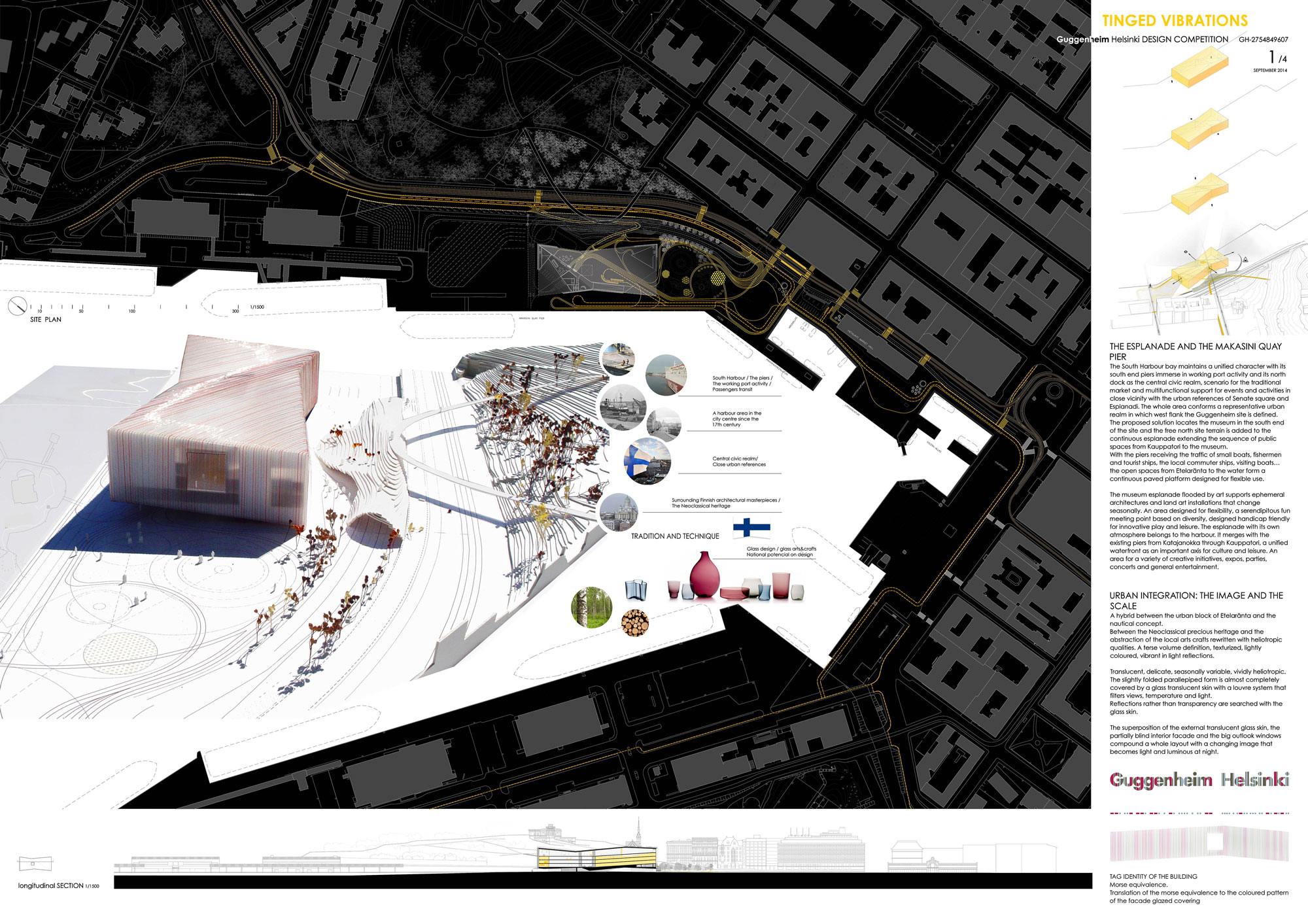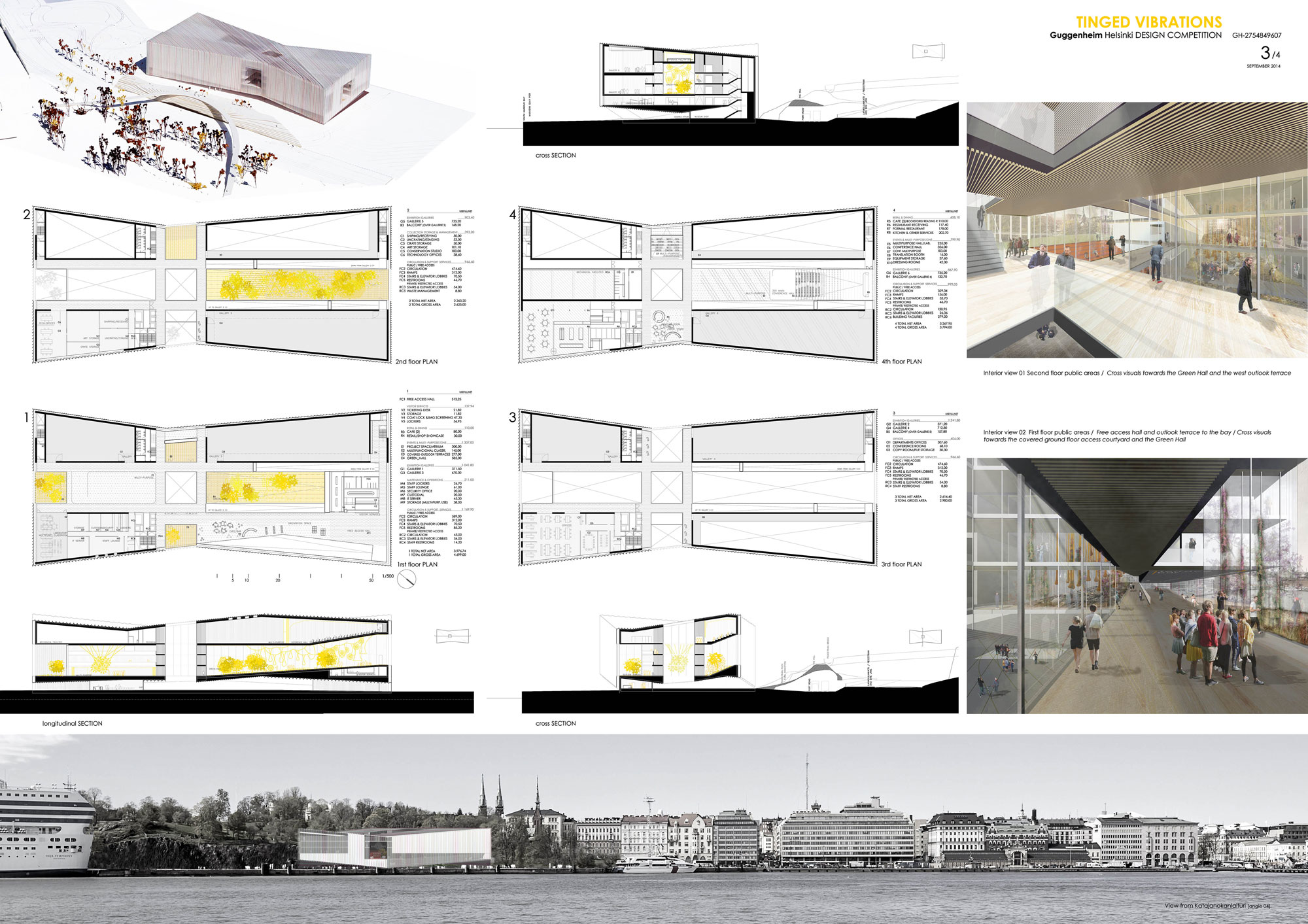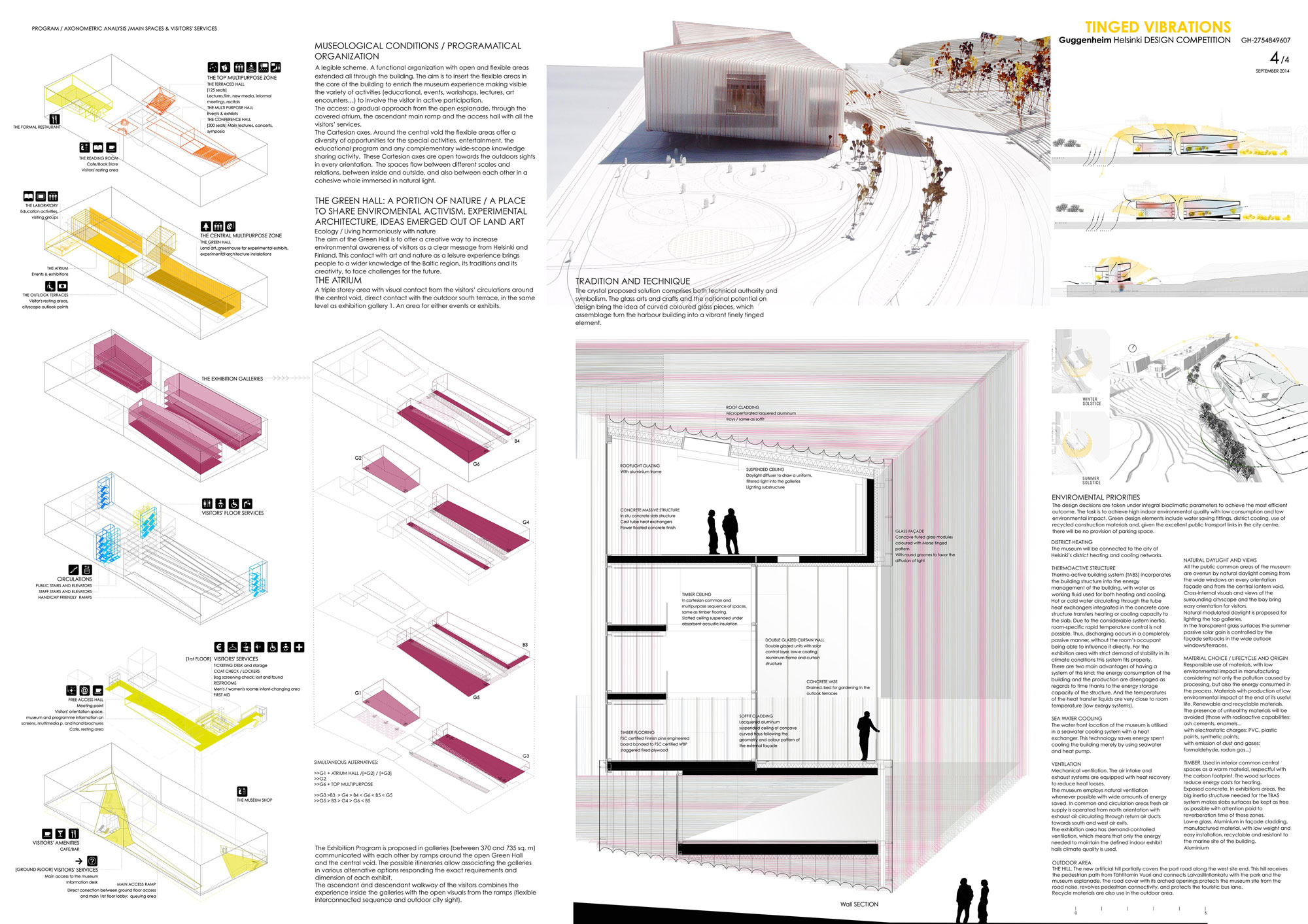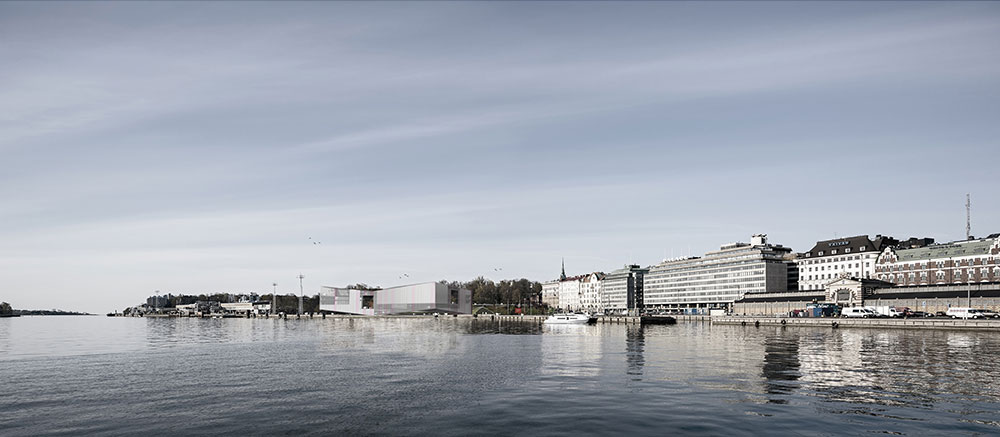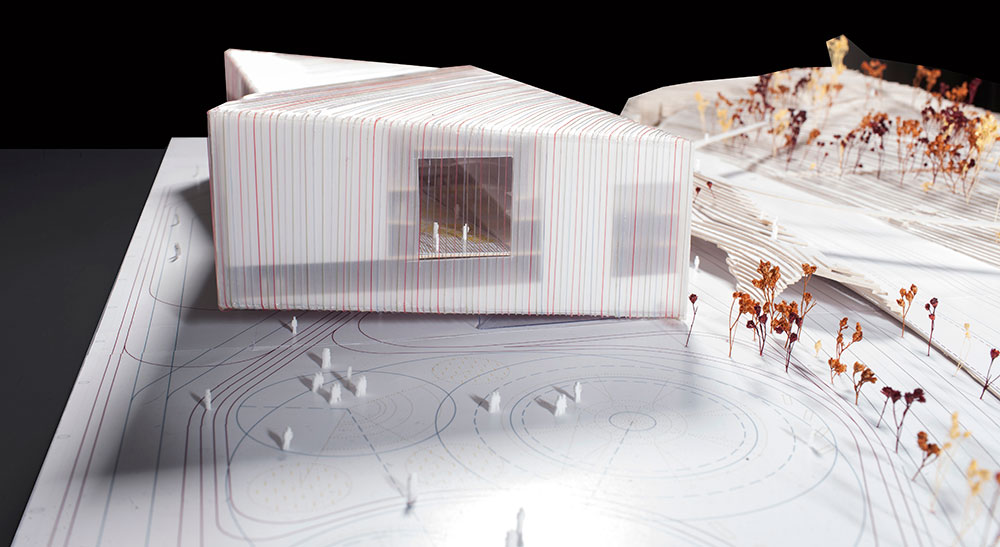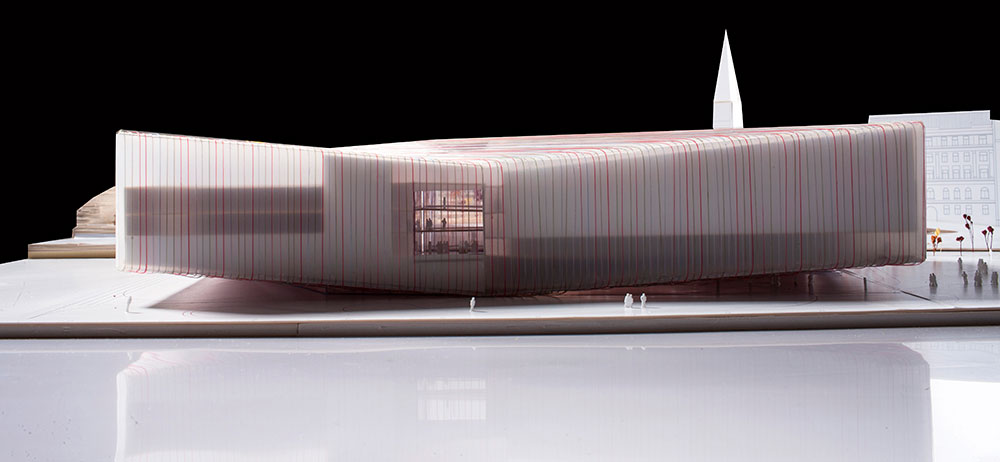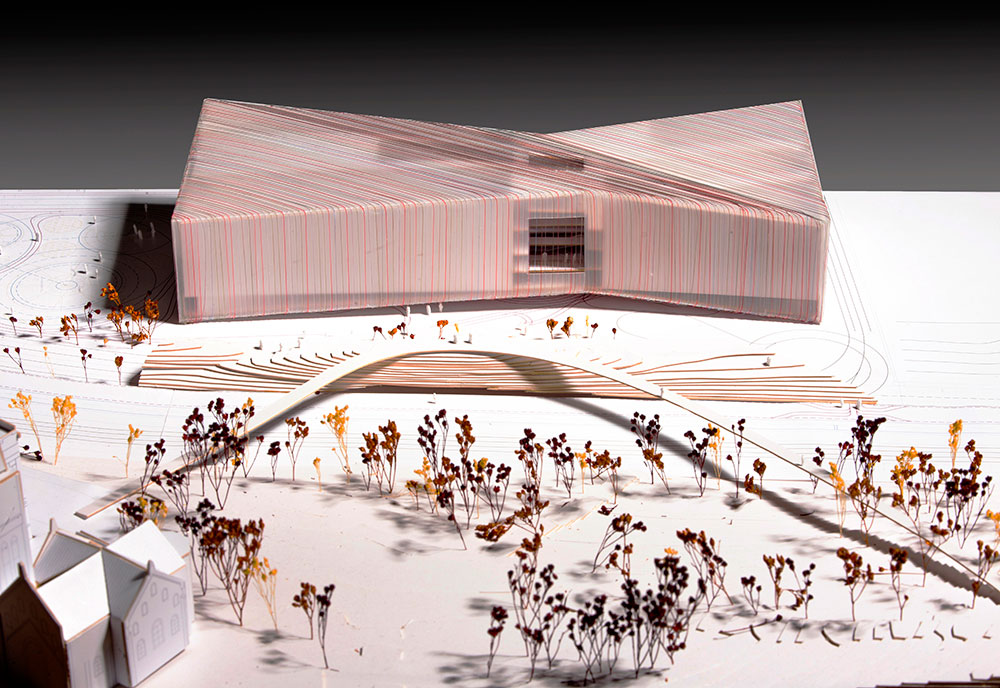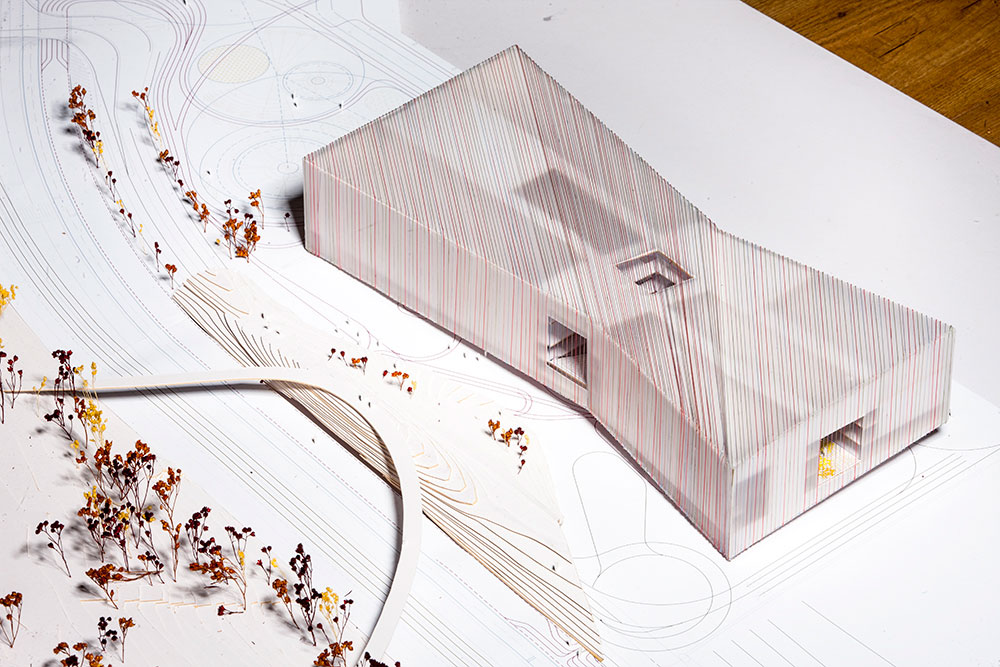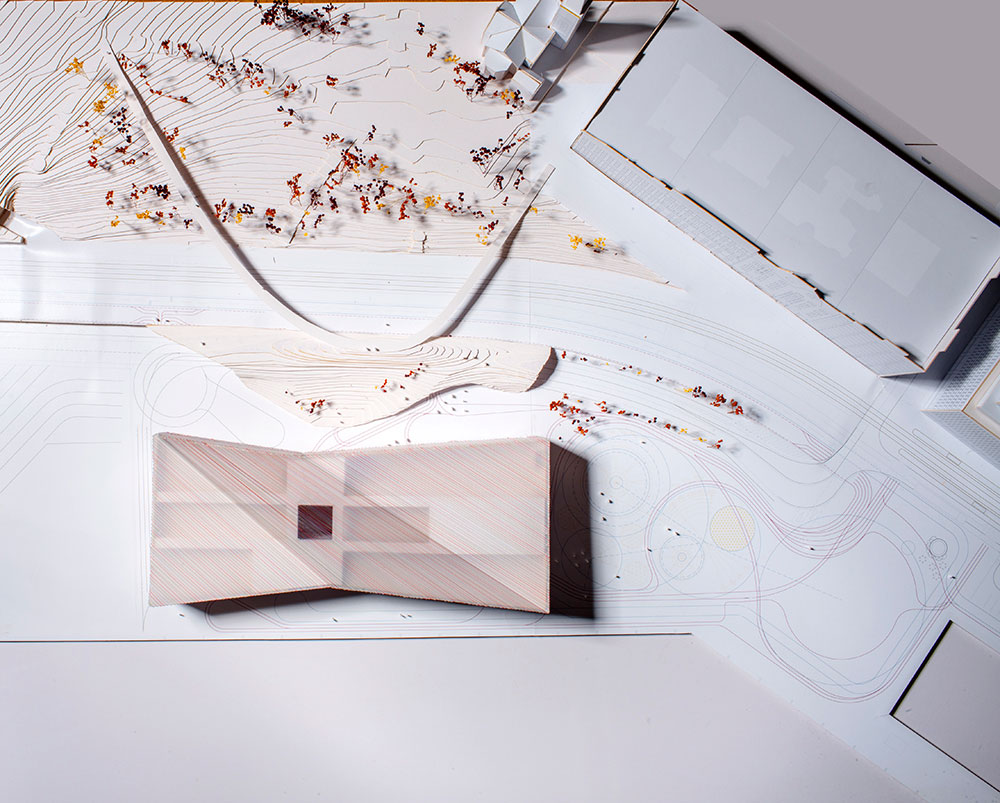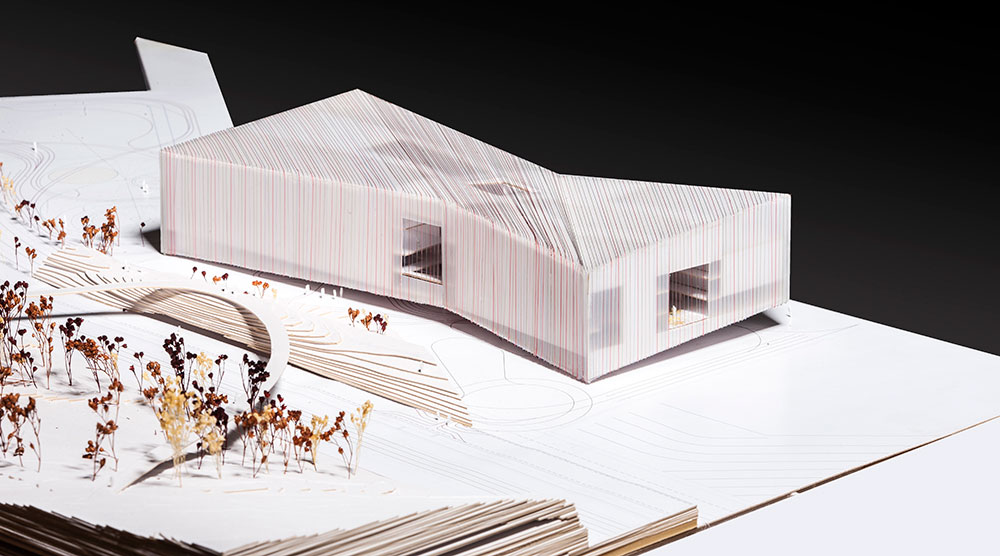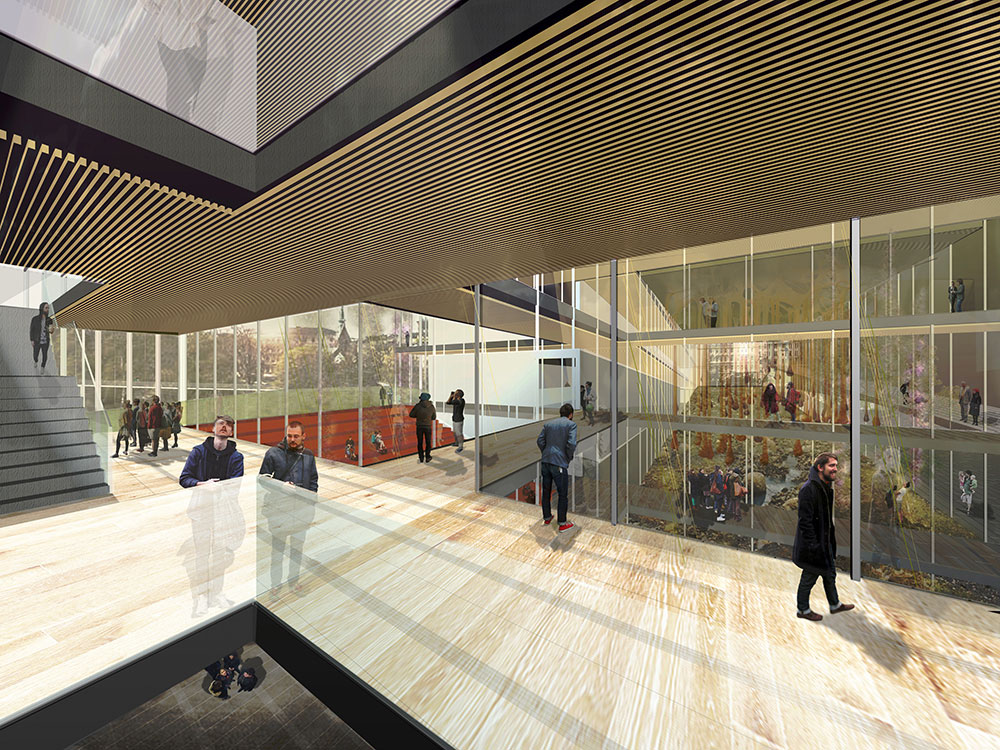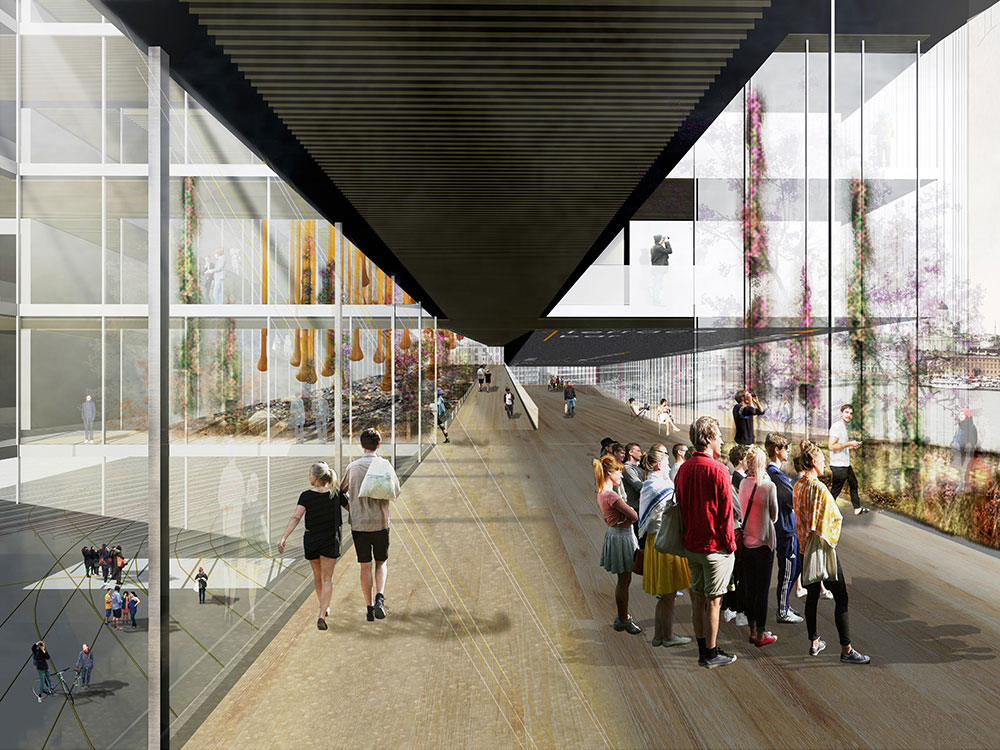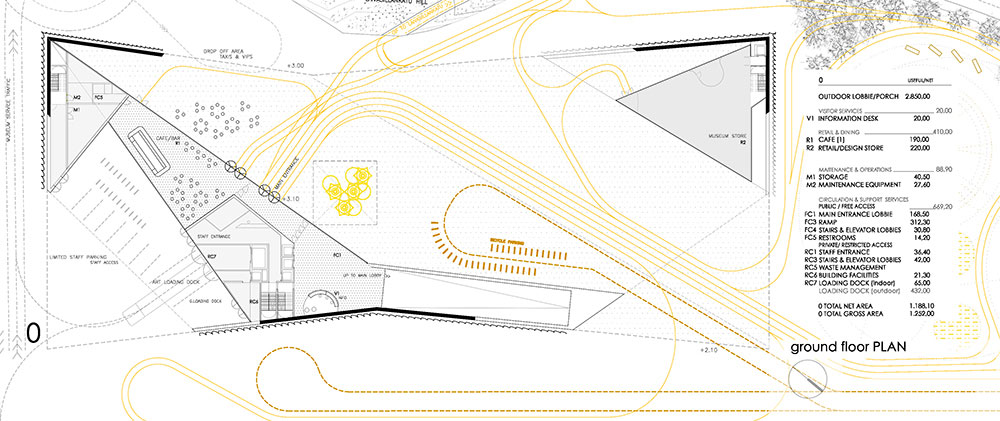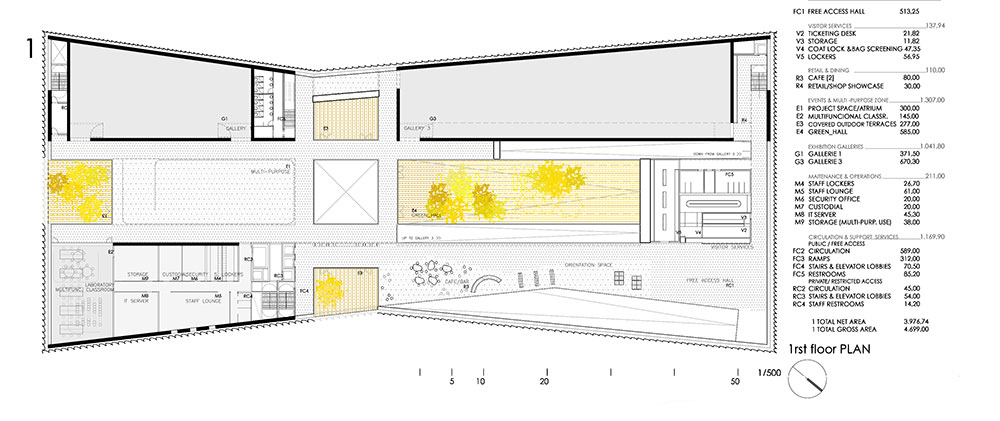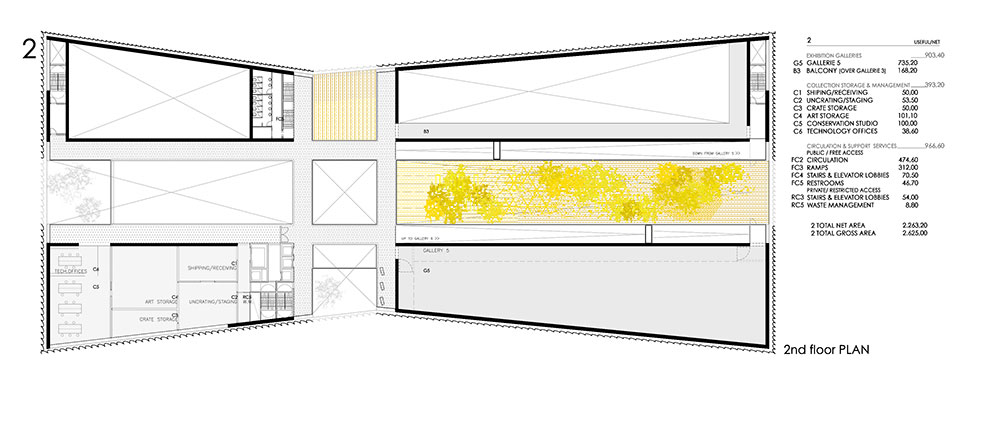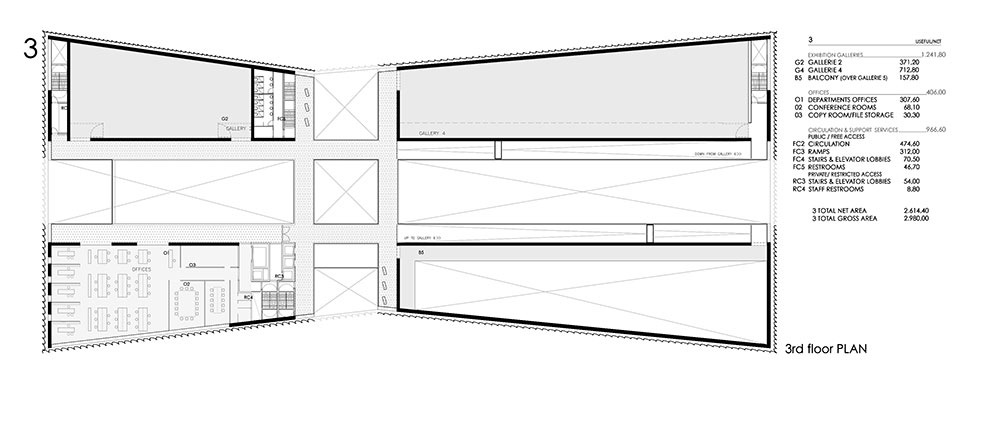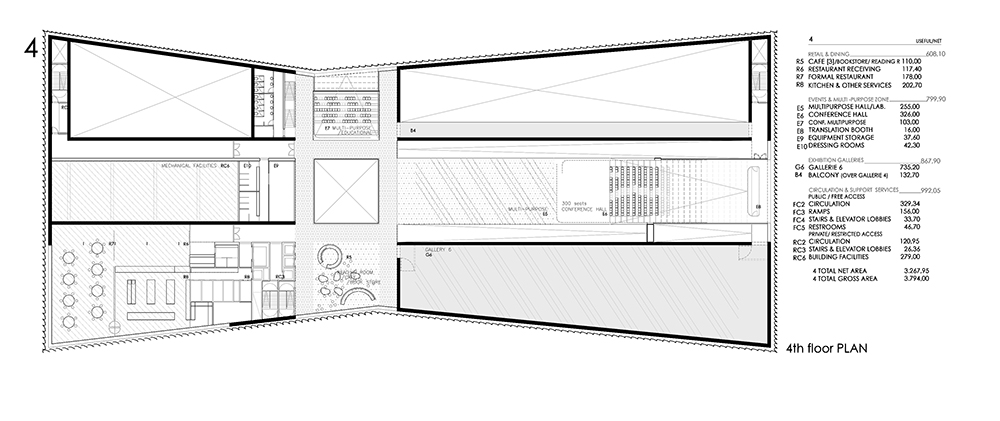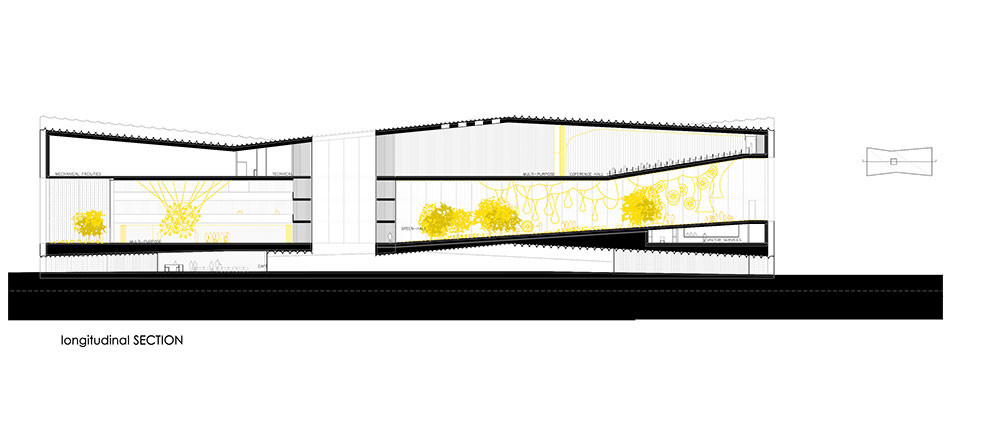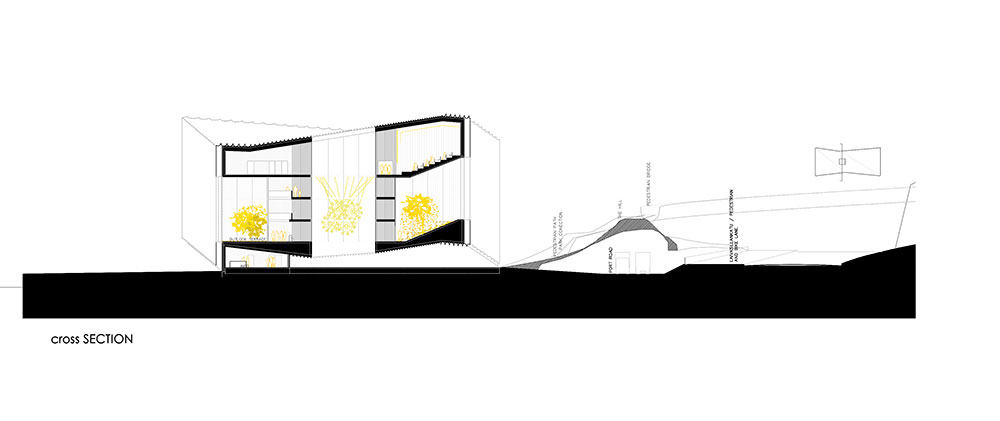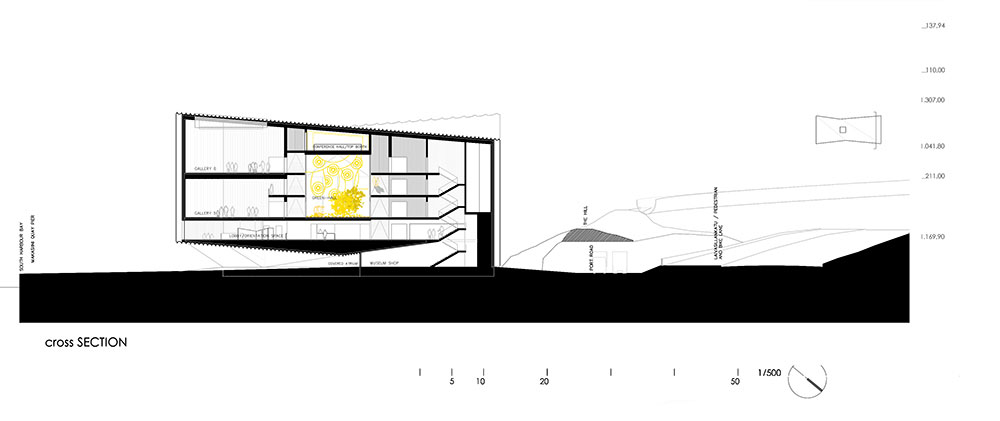1271-AZA-HEL.FI-2014
Clients: Helsinki Municipality, Guggenheim Foundation
Status: Competition (2014)
Location: Helsinki, Finland
Coordinates: 60.163658, 24.955207
Climate: Continental, Temperate
Materials: Glass, Metal
Environments: Urban, Seaside
Visualizer: Studio
Scale: Large
Types: Cultural, Museum
The South Harbour bay maintains a unified character with its south end piers immerse in working port activity and its north dock as the central civic realm, scenario for the traditional market and multifunctional support for events and activities in close vicinity with the urban references of Senate square and Esplanadi. The whole area conforms a representative urban realm in which west flank the Guggenheim site is defined.
The proposed solution locates the museum in the south end of the site and the free north site terrain is added to the continuous esplanade extending the sequence of public spaces from Kauppatori to the museum.
With the piers receiving the traffic of small boats, fishermen and tourist ships, the local commuter ships, visiting boats… the open spaces from Etelaränta to the water form a continuous paved platform designed for flexible use.
The museum esplanade flooded by art supports ephemeral architectures and land art installations that change seasonally. An area designed for flexibility, a serendipitous fun meeting point based on diversity, designed handicap friendly for innovative play and leisure. The esplanade with its own atmosphere belongs to the harbour. It merges with the existing piers from Katajanokka through Kauppatori, a unified waterfront as an important axis for culture and leisure. An area for a variety of creative initiatives, expos, parties, concerts and general entertainment.
The Laivasillankatu Hill and the Pedestrian Bridge from the park
An aerial pedestrian bridge emerges from the centre of Tähtitornin Park and the end of Bernhardinkatu. An arc line crosses over the street and lands on the new hill. The hill embraces the port road and forms a new artificial topography on the west side of the site, resting on the dock level and growing up from the Laivaisillankatu road and pedestrian lanes to receive the curved path.
Interconnectivity of urban fluxes. The goal is to open up the area and reunite the different site surrounding districts with each other and all of them with the water. The pedestrian aerial bridge lays on the new artificial hill that embraces the port road over the west site alignment. It serves as a pathway to the museum from the Design District (Design Museum and Museum of Finnish Architecture). And from the park to Laivasillankatu, to the Market Hall… and towards Kauppatori, Esplaanadi… All the ways through the museum courtyard as the reference landmark in all these urban connexions.
In addition to resolve the topographical barrier (pier level_Laivasillankatu_Tähtitornin Vuori) the hill protects the museum from the heavy trucks traffic and becomes the reference arrival point for the museum visitors’ vehicles.
El asiento del edificio
The museum lays on the pier level. Three of the four vertex rise up from the pavement generating a covered open outdoor space, extension of the pier platform as a wide welcoming atrium. All the fluxes that define the surrounding esplanades converge in the museum threshold. It is an open space towards the bay and the new hill park elongation. An extension of the museum esplanade.
Generating an open plan space without intermediate pillars, a flowing single storey space with a sense of endlessness on account of the open views towards the green hill, the water and the Ullanlinna site, and the natural light from the central void that acts as a lure for the main entrance threshold.
Urban integration : the image and the scale
A hybrid between the urban block of Etelaränta and the nautical concept. Between the Neoclassical precious heritage and the abstraction of the local arts crafts rewritten with heliotropic qualities. A terse volume definition, texturized, lightly coloured, vibrant in light reflections. Translucent, delicate, seasonally variable, vividly heliotropic.
The slightly folded parallepiped form is almost completely covered by a glass translucent skin with a louvre system that filters views, temperature and light. Reflections rather than transparency are searched with the glass skin. The superposition of the external translucent glass skin, the partially blind interior facade and the big outlook windows compound a whole layout with a changing image that becomes light and luminous at night.
Tradition and technique
The crystal proposed solution comprises both technical authority and symbolism. The glass arts and crafts and the national potential on design bring the idea of curved coloured glass pieces, which assemblage turn the harbour building into a vibrant finely tinged element.
Museological conditions / programatical organisation
A legible scheme. A functional organization with open and flexible areas (usually associated to the most public and closed to the access components) extended all through the building. A wide flexible spatial sequence is designed to complement the static exhibition galleries. The aim is to insert the flexible areas in the core of the building to enrich the museum experience making visible the variety of activities (educational, events, workshops, lectures, art encounters…) to involve the visitor in active participation.
Flexible sequence:
The access: a gradual approach from the open esplanade, through the covered atrium, the ascendant main ramp and the access hall with all the visitors’ services. The Cartesian axes. Around the central void the flexible areas offer a diversity of opportunities for the special activities, entertainment, the educational program and any complementary wide-scope knowledge sharing activity. A sequence where any project can come possible. These Cartesian axes are open towards the outdoors sights in every orientation (to the park, to the city, to the bay, to the south terminals’ dock). These spaces flow between different scales and relations, between inside and outside, and also between each other in a cohesive whole immersed in natural light.
The green hall: a portion of nature / a place to share environmental activism, experimental architecture, ideas emerged out of land art
Ecology / Living harmoniously with nature
The aim of the Green Hall is to offer a creative way to increase environmental awareness of visitors as a clear message from Helsinki and Finland. This contact with art and nature as a leisure experience brings people to a wider knowledge of the Baltic region, its traditions and its creativity, to face challenges for the future.
